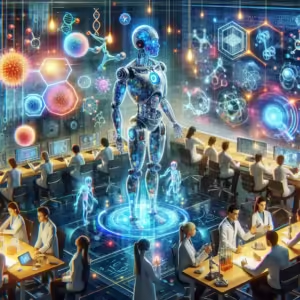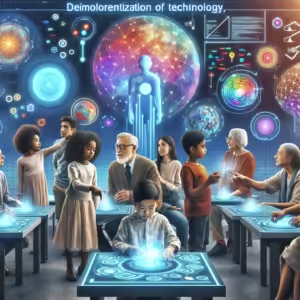Discovering Havens Untouched by Artificial Intelligence
In a world that’s increasingly dominated by algorithms and automation, finding spaces where humans can experience life unfiltered by technological interference becomes essential. As artificial intelligence (AI) continues to permeate our daily lives, from virtual assistants in our homes to algorithms curating our online experiences, there is a growing need to seek out places and activities that remain human-centric by design.
The Rise of AI and Its Pervasiveness
Artificial intelligence has rapidly evolved from a futuristic concept to a tangible presence in multiple aspects of life. While the advantages of AI are undeniable, such as increased efficiency and instant access to information, there is a burgeoning awareness of potential drawbacks. The omnipresence of AI can lead to concerns regarding:
Amidst these challenges, there’s a powerful call for balance. How do we find spaces where human experiences are prioritized and unaltered by AI predictions or interventions?
Embracing Simplicity: The Core of Human-Centric Experiences
The antidote to AI’s pervasive presence lies in its contrast: simplicity and authenticity. A growing trend is the pursuit of environments that nurture our primal instincts and our need for genuine, emotion-driven interactions. This shift brings focus back to what it means to be human and emphasizes the importance of environments that foster:
Nature Retreats: Disconnect to Reconnect
Nature serves as a sanctuary untouched by digital distractions. Immersive experiences in places like national parks, remote islands, and wilderness reserves offer a reset, allowing individuals to disconnect from their devices and reconnect with their senses. The benefits of spending time in nature include:
For those seeking solace from the digital barrage, nature is a balm that mends and nourishes the spirit, providing experiences that technology simply cannot replicate.
Artistic Endeavors: Expression Without Algorithms
Engaging in art offers an outlet untainted by predefined rules set by AI. Whether through painting, writing, music, or dance, artistic pursuits allow individuals to express emotions and ideas unique to their human experience. The joy and fulfillment derived from art lie in its spontaneity and imperfection, qualities that AI has yet to authentically mimic.
Artists often seek inspiration in human-centric settings such as:
These environments foster collaboration, exchange of ideas, and community, reinforcing bonds not easily formed in digitally dominated spaces.
Local Cultures and Traditions: A Tapestry of Humanity
Exploring local cultures and traditions offers insights into the rich tapestry of human history and diversity. These cultural experiences remain grounded in human practices and rituals that AI cannot duplicate, from traditional crafts to communal festivals and indigenous storytelling.
By engaging with local cultures, individuals can uncover:
These interactions enhance our appreciation for cultural diversity, nurturing empathy and understanding in an increasingly digital world.
The Role of Human-Centric Design in Digital Spaces
Finding balance means designing digital spaces that honor human needs and experiences. Human-centric design in technology aims to prioritize users’ emotional and psychological well-being. Key principles include:
As technology continues to evolve, integrating these principles can ensure that AI serves as an enhancer of human life, rather than its replacement.
Cultivating Human-Centric Mindsets
While escaping to physical spaces unblemished by AI is revitalizing, nurturing a human-centric mindset within our daily lives is equally important. Strategies include:
By fostering this mindset, individuals can remain connected to their humanity amidst rapid technological advancement.
Conclusion: Navigating the Future with a Human-Centric Compass
The journey to human-centric destinations beyond AI’s reach is not about rejecting technology but finding equilibrium between digital convenience and authentic human experiences. By prioritizing spaces, behaviors, and mindsets that emphasize our humanity, we can navigate the future with confidence, ensuring that AI augments rather than diminishes our human essence. Whether exploring the untouched beauty of nature, expressing oneself artistically, or immersing in diverse cultures, these pursuits remind us of the richness of life that thrives beyond screens and algorithms.








